Is it possible to supply gas to a garage: features of gasification of garage premises
Are you dreaming of a multi-functional garage? Maybe you are an avid car enthusiast and have more than once thought about gasifying your parking bay? Want to know more about this? So is it possible to pipe gas into the garage, how to do it correctly, and how much money will you have to spend - there are answers to these questions.
We decided to pay attention to the issue of gas supply in domestic buildings. The entire article is devoted to the use of gas in the garage, including theoretical and practical aspects. For those who do not yet have a car and a garage, the following will also be useful, and perhaps in the near future.
Let's face it, the arrangement of small objects like garages seems simple only at first glance. Their very location can cause difficulties in planning communications, and it is not at all necessary that they should be far from civilization. Gasification involves requirements, restrictions and a large number of actions. Therefore, we structured the information so that there were fewer questions with each new line.
The content of the article:
- Features of garage gasification
- Procedure for obtaining technical specifications
- Difficulties connecting to the gas network
- Current requirements for garage premises
- Step-by-step gas connection to the garage
- Price range in different regions of Russia
- Requirements for heating with gas from cylinders
- Conclusions and useful video on the topic
Features of garage gasification
According to SNiP 2.04.08-87 “Gas supply” in paragraph 6.32, gas equipment can be placed in buildings located separately from residential buildings or adjacent to them. Owners obtain permission from design organizations.
The authorized structure takes into account the availability of a gas line for the implementation of such intentions, and geographical factors of the area. The same criteria apply to rooms in individual buildings as for living rooms. The feasibility of projects and calculations depends on the gas operating specialized company.
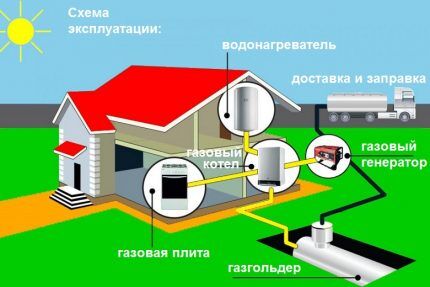
The connecting branch to a non-residential premises or a building under construction is installed according to an individual project based on an agreement between the owner of the property and the gas service. The active process starts after the customer receives technical specifications (THAT).
In this sense, the procedure is as follows:
- Submit a request for the preparation of technical specifications.
- Get TU.
- Draw up a written application for the agreement on accession to communications.
- Sign the document to connect.
- Obtain a warrant to put a non-residential building into operation.
- Sign the act of connection to gas communications.
The operational features of garage premises and their compatibility with gas appliances raise the need for regulation and standardization.
Garage owners install gas boilers, stoves, burners, gas heat guns, but this may be hampered by the small size of buildings, the lack of windows and other rooms besides the main one.
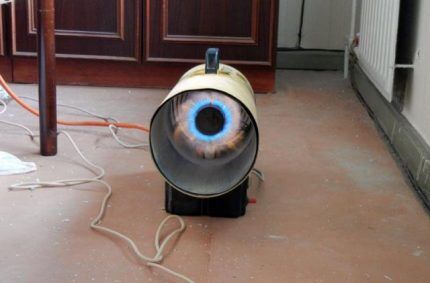
You should not strive to gain access to main pipe, because there are also alternatives with cylinders and tanks for autonomous gasification.
Procedure for obtaining technical specifications
Technical conditions for gas supply to the garage will be issued by the gas service at the location of the facility.

The owner of the premises should submit the application itself for drawing up the contract, as well as the following documentation:
- land ownership documents;
- identification card or official document confirming the authority of the representative;
- topographic plan of the territory with the building;
- registration certificate;
- consent of the gas distribution company;
- garage plan along with smoke and ventilation ducts.
Upon delivery, the customer receives pressure parameters at the point of connection to the gas network, the minimum and maximum gas use per unit of time, a description of the system features and the permissible gas consumption.
The owner of a garage with specifications in hand has the right to go to court if he is denied connection. The decision is usually made in favor of the plaintiff. The opportunity to go to court is also used in case of refusal to issue technical specifications.
Difficulties connecting to the gas network
It will be easiest if the gasification program includes a residential building with a garage next to it or next to it. Areas within or near large cities are more likely to receive gas. In principle, there are no direct legal prohibitions on bringing gas into the garage - both for the use of gas boilers and for the use of other appliances.
However, there are still theoretical grounds for refusal.They are the specifics of the terrain and distance.
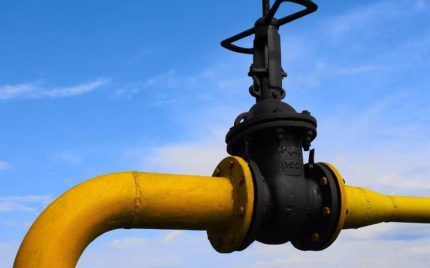
Connecting unfinished structures to gas networks is accompanied by insurmountable difficulties. If the site of the new building was old and already gasified, and there is no need to lay a branch line, changes will be needed to the existing design documentation for the facility.
The schematic plan will be issued by the technical inventory bureau (BTI) of the local administrative-territorial unit. The problem is that the drawing must have an area, and the BTI carries out measurements only after the ownership of the new premises has been presented.
Current requirements for garage premises
Came into force on June 6, 2019 Rules for the design of gas supply systems SP 402.1325800.2018, which were approved based on the order of the Ministry of Construction and Housing and Communal Services No. 789/pr dated December 5, 2018.
The rule of a 50mm margin between the sides of the slab and the counters still applies. As before, a 40-centimeter height interval from the same appliances to the burners should be observed. The new standards also do not prohibit the installation of double-glazed windows in rooms with boilers, but only if the structure of the glass allows them to be knocked out without much effort.
Connecting a gas stove in the garage
Only sealed hoses made of safe materials are suitable for this and other equipment. The length of the connecting elements should not exceed 1.5 meters.

Gas will definitely not be connected if the new requirements for stoves are not met:
- for gas stoves under a canopy, you need to use blow-out protection;
- the stove must have a “gas control” system, and between the tap and the hose there must be a dielectric coupling against stray current;
- gas cooking appliance must comply GOST 33998;
- At least 1 m of margin should be left from the slab to the opposite wall.
Slabs for the garage, as well as for residential premises, should be purchased only from certified manufacturers, along with supporting documents for these devices.
Placement of heating boilers
You cannot install a gas boiler/heater/boiler in the same space as a car. The way out of the problem will be a combustion chamber. For a finished or attached garage space, basic and additional requirements apply. Type 2 standards will have to be checked with your local gas service.
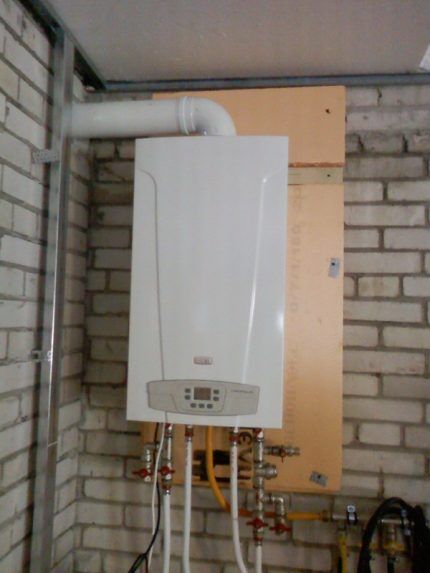
Installing a boiler in a garage will be acceptable if the building meets the following parameters:
- non-freezing structure with an area of at least 4 m² and a height of 2 m;
- the door opens outward and its width is at least 80 cm;
- the walls consist of non-flammable or low-flammable materials;
- There is a window for ventilation and light, approximately 1 m² in size.
Must be present in the garage supply and exhaust ventilation. Its condition should be checked with a sheet of paper. In a working system, air in the supply channels will repel the leaf, and in the exhaust channels it will attract it.
Step-by-step gas connection to the garage
The process consists of 6 steps, and the first step is to select a gas supply option.It is selected based on the heated area, the volume of the room, the average stay time and the number of people in the garage at the same time.
Subsequently, a draft technical specification is drawn up. The local gas service will review the application within 1 month. For buildings more than 200 m from a local pipe, alternative connection options will be needed.
At the next stage, a technical connection to the gas system is made. The insertion is carried out by gas service specialists. The consumer should expect expenses in the amount of 25-50 thousand rubles. The cost of work includes prices for insertion and laying.
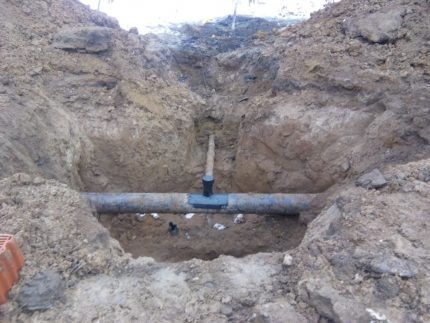
The most expensive component may be the garage gasification project. All equipment and planned gas communications of the garage are shown on the diagram. Each device, as well as the chimney, is “placed” at its exact location.
The procedure includes 2 alternatives:
- Contact the gas distribution organization. It will be relatively cheap, but the completion time will be 3-6 months.
- Order a diagram from a private design office. The situation regarding price and timing will be exactly the opposite.
Then they begin to install gas-using installations such as boilers, stoves, gas heat guns, etc. At this stage, customers turn to gas workers and arrange contracts for work.
After installing gas appliances, the consumer will still not receive fuel. Employees of the gas distribution organization must first check the safety of the devices and ensure that the operating conditions are met.The owner of the garage makes an application for this and waits about 2 weeks until specialists arrive on site.
Upon arrival, gas service workers will provide instructions on safety rules and seal the meter. The check will be confirmed by a receipt, and soon the gas connection to the garage can be spoken of as a fait accompli.
Price range in different regions of Russia
It is no secret that the cost of services differs depending on the territory. Taking into account this factor in general, and the convenience of the location of the facilities, residents of different parts of the country receive bills with a 10-fold difference in figures.
Collecting documentation and obtaining technical specifications will cost from 8 to 50 thousand rubles. The gasification project will be completed for 3-20 thousand. Each meter of wiring from the main pipe will cost 2-5 thousand rubles.
The insert alone costs up to 10-15 thousand in national currency. You will have to pay 1-2 thousand rubles for an inspector to come out and assess the readiness of the equipment. - quite a bit against the general background.
Requirements for heating with gas from cylinders
As an alternative, you can use bottled gas. Containers should be kept in a closed metal cabinet for storing gas cylinders.
To locate it, you need to choose a place as far as possible from heating devices and flammable appliances.
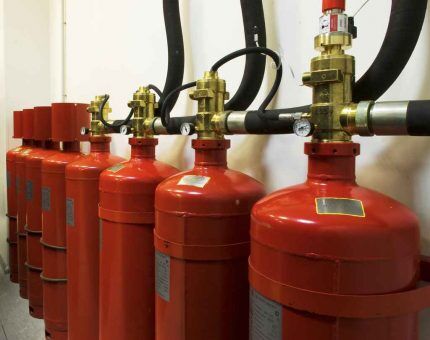
You cannot install a module with cylinders at floor level, because in this case it will not be possible to notice a gas leak in time and solve the problem.
Conclusions and useful video on the topic
Introductory material describing the principles and algorithms for gasification of buildings on the site:
Heating a garage using gas equipment, a description of the operation of the devices and nuances in the arrangement of the room:
The possibilities of garage premises are expanded not only in terms of engineering work. Car owners also try to control the temperature inside the garage. They do this for the sake of the vehicle itself, working conditions, and also for the ability to properly store parts, chemicals and other accessories.
To have gas in the garage, you need to meet the requirements for the premises and obtain specifications. Then the owner will have to work with documents for the project. The premises must be gasified, but only if there are no technical obstacles.
We are sure that you want to share your opinion with others. We have provided the form below specifically for this purpose. Perhaps you have your own view on the problem of gasification of garages, or you want to talk about your situation. Describe the main difficulties, if not everything went smoothly.


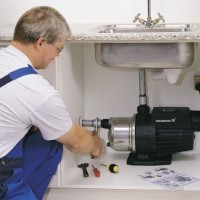
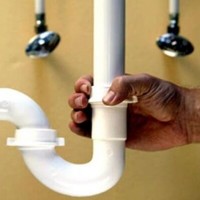
Why, when gasifying a detached private garage, am I forced to build a boiler room as a commercial enterprise, with an expensive GSM gas meter, protection devices and other expensive accessories?
We have both power engineers and gas workers, bloodsuckers who are ready to drink all the blood from us.
They might not have written about gas cylinders, if it were profitable to use such gas for heating, I probably wouldn’t have asked anyone’s permission, but what I understood from the article is that you need to have a lot, a lot of money to supply a garage with gas.